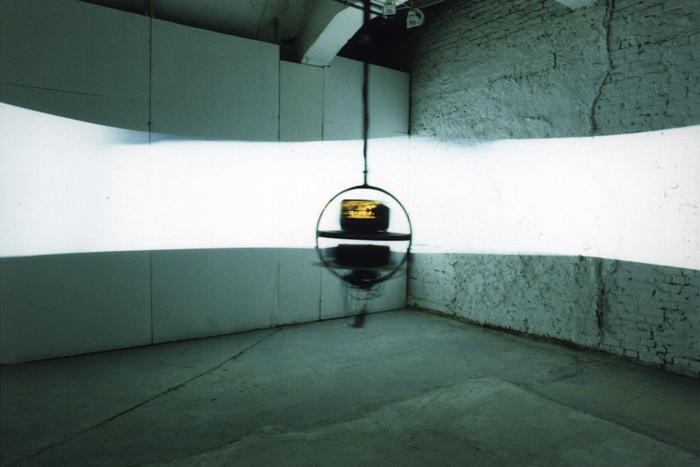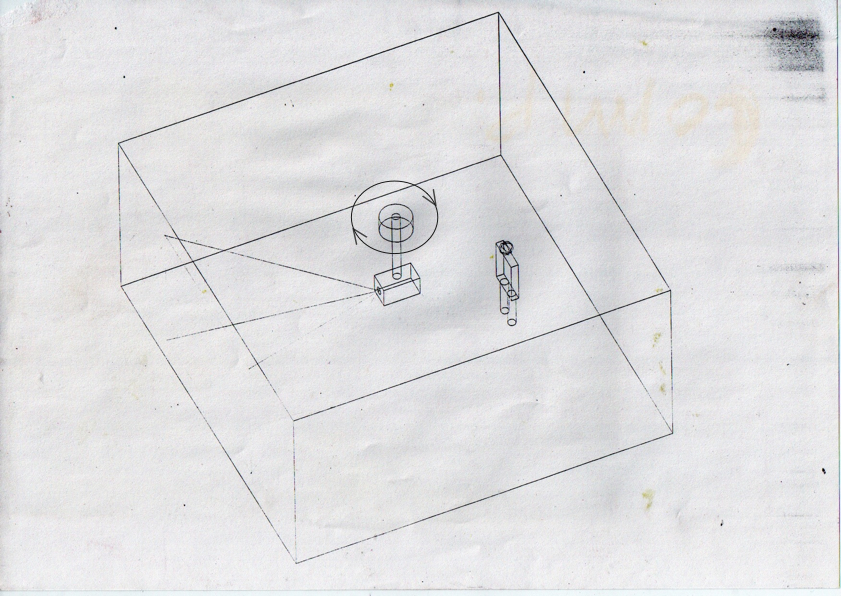Time projection, 1995, Psychiatriepatienten, Kunsthaus Tacheles Berlin, 2000
If we project one film on the wall, then we have a projection of a film, for example in black and white or in color, with a story, actors, animals, nature, buildings, figures etc… But what happens if we project that picture on the same picture? A construction which could be rotated was installed in the middle of a square dark room. On the rotated construction was installed one camera and one video beam. First this room was filmed with the camera a full 360°. Then this recording was projected from the same position and hight and same rotating speed, on the same walls, synchronized exactly with the same room. The turning spotlight that illuminates the room was projected on the same surface which had been previously recorded. Outside the room, this rotating video looks like the illumination of the walls by the spotlight. But to observe this room, the observer has to be inside it. So, until the observer is outside the projector’s lens, he has the feeling that the projector is projecting only light. But the moment that he, ore somebody else who is on the room, gets projected by the projector, the observer can see that this projection is recorded. The room becomes a new quality jut like the bodies. The moment when the projection illuminates the bodies, the border between the body and the room vanishes. The body becomes unified with the space. The body becomes the architecture. During this projection, the projector projects the space onto space. One layer overlaps with the other layer, thus this projection creates parallel spaces. The same space gets projected on the same space with a time difference. With every rotation the room changes. With a longer time difference the changes get much more visible. So, when we project the projection on the walls do we project only the projection or also the time of the recording? Do we project preserved time and preserved space? What happens when we project this projection on some different space? Can we call that space and time transporting? Through the recording of the space and then projecting of the same space, we have a reproduction of the space. If we observe the recorded surface (the walls of the room) as original and then the projection (the projected projection) as a reproduction, how should we call the moment when the reproduction (the projected projection) overlaps with the original (the walls of the room)? By each visitor this work does relies different questions.
sketch plan for Time projection, 1994, Psychiatriepatienten

